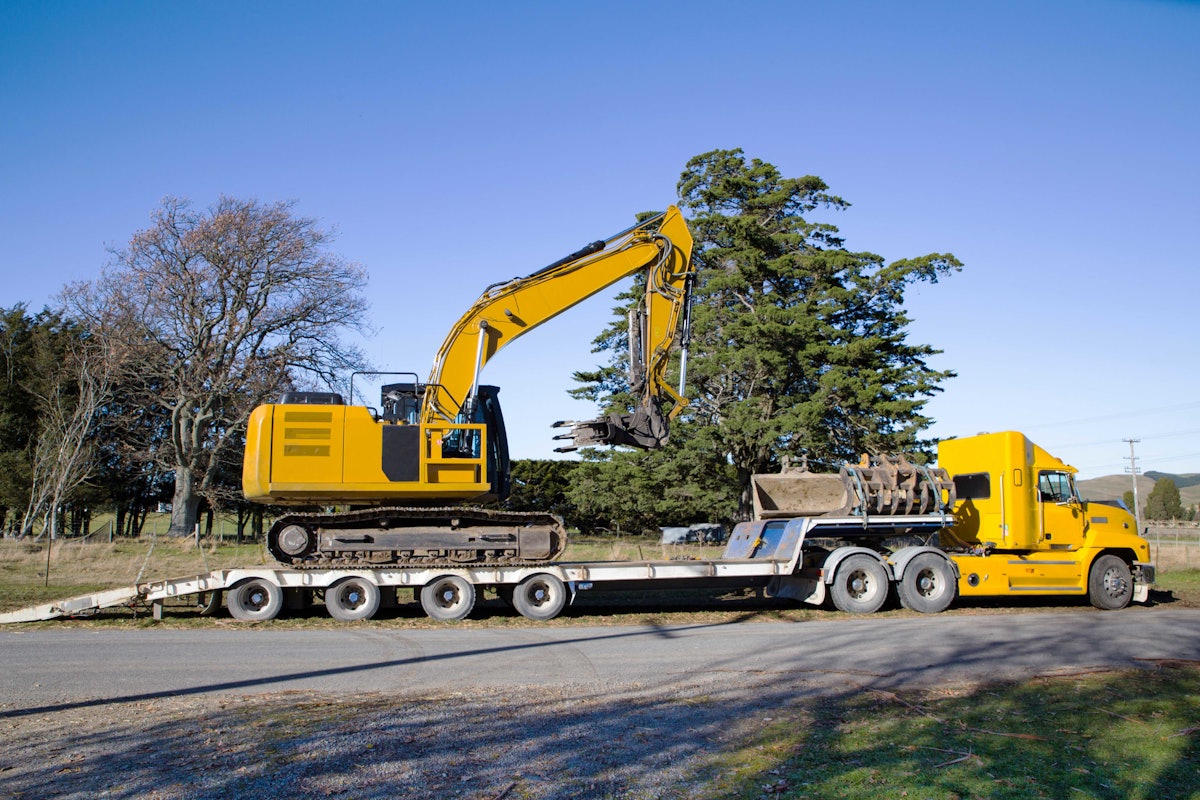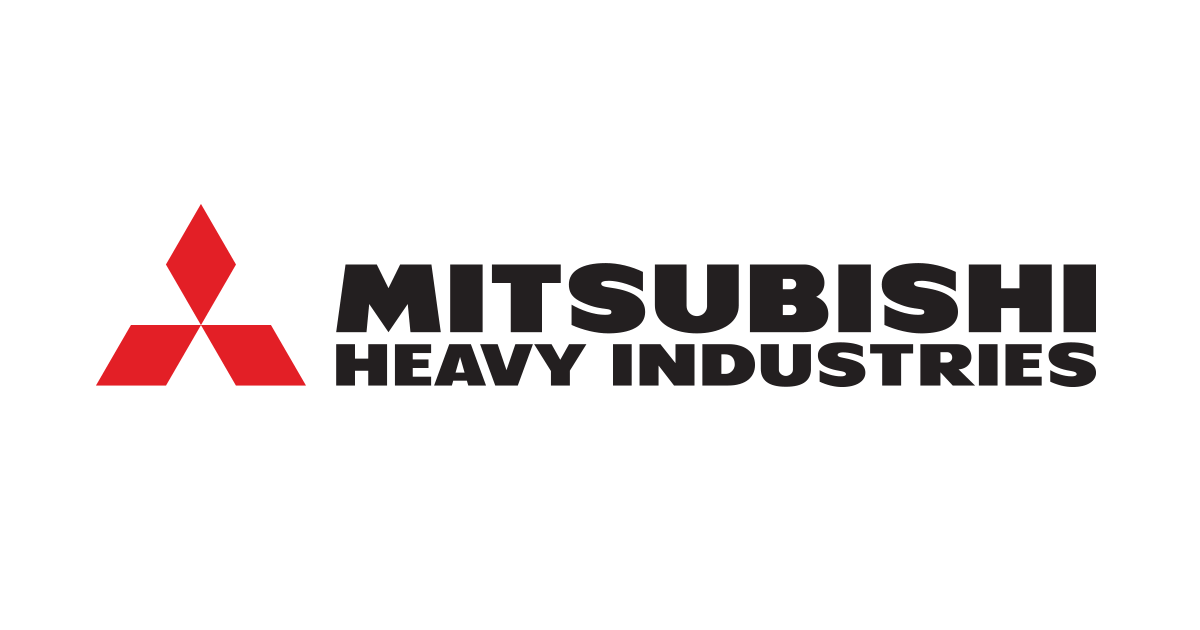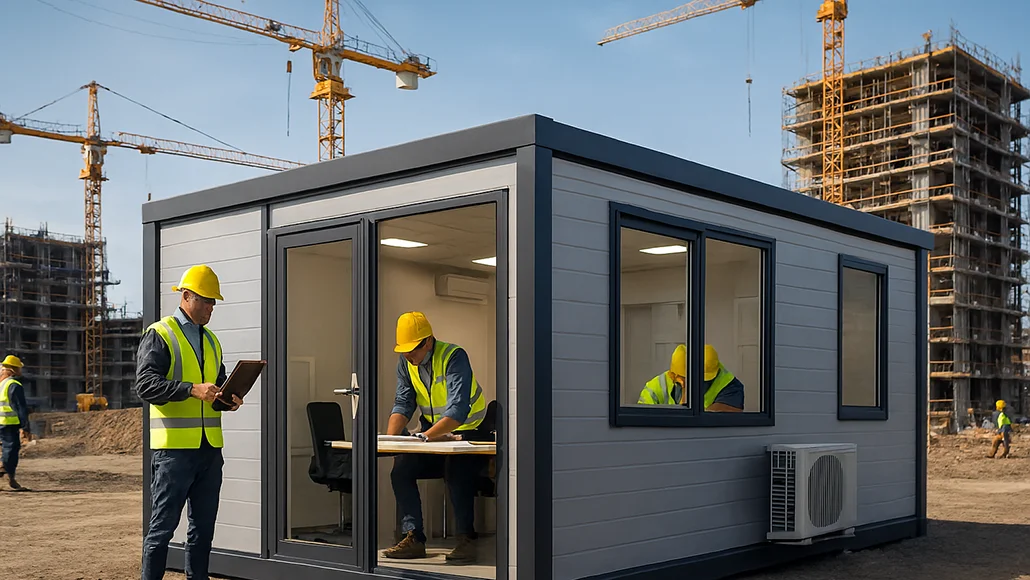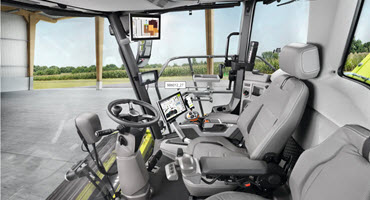HEADS UP: Hitting utility lines when hauling heavy equipment can become an expensive ordeal
Here's a look at overhead utilities' minimum height clearances, who's liable when they're struck and how haulers can avoid damaging...

Editor's Note: This story was updated May 1, 2023.
When it comes to hauling heavy construction equipment, you need to be aware of more than just bridge and overpass heights when you’re on the road.
Overhead utility lines also need to be a consideration. But unlike bridges, utilities don’t have posted heights.
The lowest allowable lines are insulated telecom cables, and they have a minimum clearance of 15.5 feet over ground and road, according to Nelson G. Bingel III, immediate past chairman of the National Electrical Safety Code.
After telecom cables come electrical wires, and their minimum heights range from 16 to 18.5 feet, depending on increasing voltage and whether they are insulated, Bingel says.
Sometimes, though, the lines will hang lower than the allowable minimum heights due to “wire creep and environmental conditions,” he says.
Low-hanging lines usually aren’t a problem, except when a large vehicle needs to pass through. Heavy haulers may hit these overhead lines, causing damage to their equipment and destruction to the poles or structures holding the overhead lines. Even though the lines were too low, this doesn’t mean that the drivers or their carrier are automatically off the hook.
States may have laws stating that drivers or carriers are responsible for damages when vehicles hit overhead objects. For example, North Carolina General Statutes state, “The operator or owner of any vehicle having an overall height, whether unladen or with load, in excess of 12 feet 6 inches, shall be liable for damage to any structure caused by such vehicle having a height in excess of 12 feet 6 inches.” That’s a foot lower than the state’s minimum truck height of 13.5 feet.
Would the National Electrical Safety Code or a state’s regulations prevail if a driver hits overhead lines? And who pays for the damages and repairs? The answer is not so clear. Much depends on the height of the truck and the wire’s clearance height at the time of the incident.
The utility company that owns the poles with lines too low may feel it is always the driver’s responsibility to ensure the vehicle does not hit overhead lines and may believe the driver or carrier must pay for the damage. The carrier may feel it is the utility’s fault because the accident would not have happened in the first place had the lines been placed at the proper height.
Bingel notes that telecom wires are not owned by the utility company that owns the pole. Instead, they are owned by a third party, such as Verizon or AT&T.
“The pole owner is required by the National Electrical Safety Code to inspect overhead lines, record any defects and keep records until the defects are corrected,” Bingel says. “The wording in the NESC states, ‘at such intervals as experience has shown to be necessary.’”
But obviously, the haulers have requirements, too. And if those are violated, they will likely be deemed at fault.
In less clearcut cases, determining the party responsible for the damages might have to be settled in court. Questioning liability in an accident can be an unpleasant and expensive burden for heavy hauling carriers.
To help avoid the situation altogether, here are some actions haulers can take to help prevent trucks from hitting overhead lines:
Know the state laws
There are no federal height limits. They are governed by states. The maximum height in most states is 13 feet 6 inches.
California, Arizona, Washington, Oregon, Idaho, Montana, Nevada, Wyoming, Utah, New Mexico, Texas, North Dakota and South Dakota require minimum heights of 14 feet. Nebraska and Colorado are 14.5 feet, and Alaska’s minimum height is 15 feet.
Staying at 13 feet 6 inches or under – possibly much lower as is the case in North Carolina – can help prove that you weren’t solely responsible if a driver hits an overhead line. If the vehicle or load or both are overheight and a permit is required, ensure that permit conditions are met. Permit conditions may require carriers to obtain escorts and those escorts might need to be equipped with height poles.
In South Carolina, carriers must ensure the maximum overall height of any permitted load be at least 3 inches less than any overhead structures on a route granted by the permit, and the transporter is responsible for checking all overhead vertical clearances and making all provisions for raising or removing overhead wires and cables in advance.
Mark the vehicle’s height
Some carriers will place the height of the vehicle either on the truck or tractor, or on the front of the trailer. This way, drivers are always aware of the height of the vehicle.
Train drivers on overhead obstruction awareness
Drivers are trained to recognize and respond to many different driving hazards. Training often focuses on collision avoidance for objects to the front, sides and rear of the vehicle. Overhead obstructions covered in training may only cover low clearance overpasses. While it is important to ensure drivers aren’t hitting low clearance overpasses, it’s also important to cover other overhead obstructions such as telecom and power lines.
It always pays to keep a “heads up.” Heavy haulers whose load is also overheight, even by a small measure, should keep their eyes and head up to avoid incidents.
Another thing for contractors to consider is changes in elevation that might occur from earthmoving operations on a construction site. “Change in terrain does change clearance in both directions,” Bingel says. “It can increase or decrease the clearance. When the clearance is decreased, the party is responsible to make sure the clearance is still adequate.”
For those who would like additional information about this topic or NESC, the IEEE Standards Association (IEEE SA) will be hosting the National Electrical Safety Code Workshop June 1-2 in San Antonio, Texas. This is the first in-person workshop in several years and is open for anyone to attend. The 2023 NESC, edited by IEEE SA, was published in August 2022 and took effect February 1, 2023.

 machineryasia
machineryasia 








